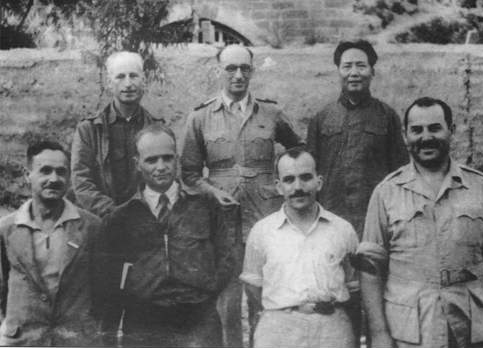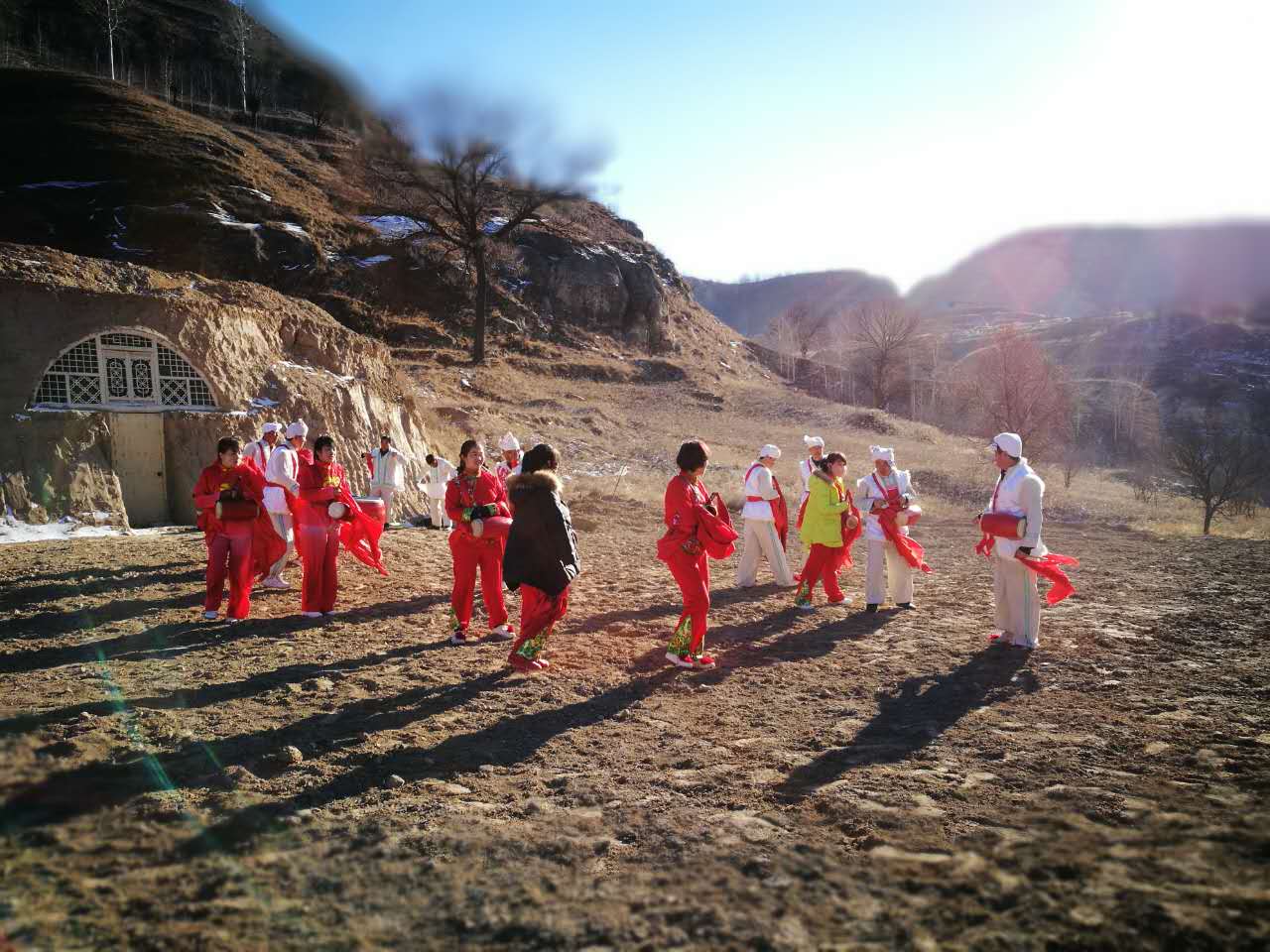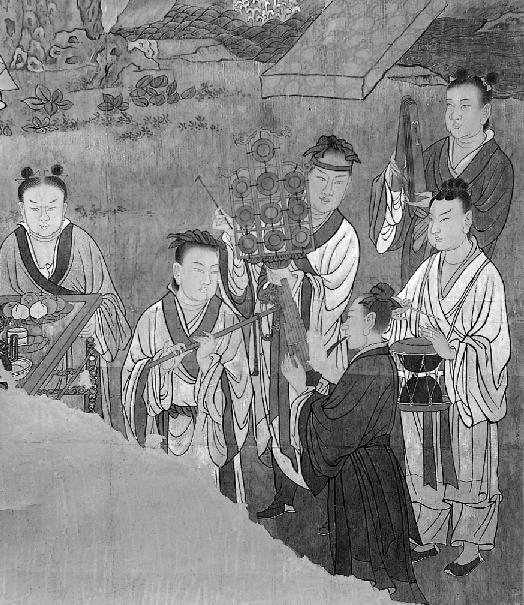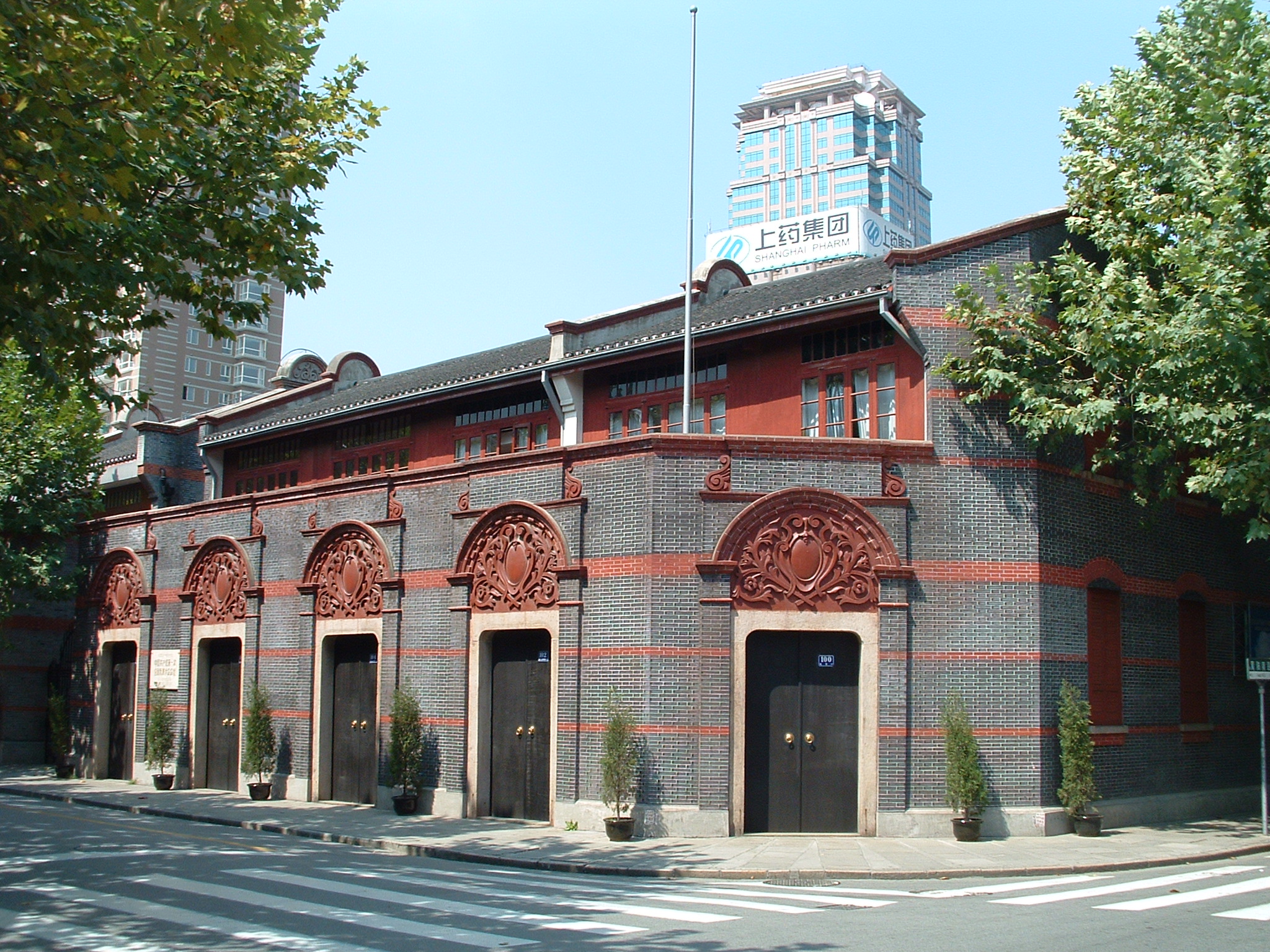|
Yan'an
Yan'an; ; Chinese postal romanization, alternatively spelled as Yenan is a prefecture-level city in the Shaanbei region of Shaanxi Province of China, province, China, bordering Shanxi to the east and Gansu to the west. It administers several counties, including Zhidan County, Zhidan (formerly Bao'an), which served as the headquarters of the Chinese Communist Party (CCP) before the city of Yan'an proper took that role. Yan'an was near the endpoint of the Long March, and became the center of the Chinese Communist Revolution from late 1935 to early 1947. Chinese communists celebrate Yan'an as the birthplace of the revolution. As of 2019, Yan'an has approximately 2,255,700 permanent residents. History Yan'an was populated at least as early as the Xia dynasty, when it formed part of . The area was not part of the subsequent Shang dynasty, and was instead inhabited by the Guifang, who fought against the Shang dynasty. The area was later inhabited by the Quanrong and the Xianyun dur ... [...More Info...] [...Related Items...] OR: [Wikipedia] [Google] [Baidu] |
Shaanxi
Shaanxi is a Provinces of China, province in north Northwestern China. It borders the province-level divisions of Inner Mongolia to the north; Shanxi and Henan to the east; Hubei, Chongqing, and Sichuan to the south; and Gansu and Ningxia to the west. Shaanxi covers an area of over with about 37 million people, the 16th-largest in China. Xi'anwhich includes the sites of the former capitals Fenghao and Chang'anis the provincial capital and largest city in Northwest China and also one of the oldest cities in China and the oldest of the Historical capitals of China, Four Ancient Capitals, being the capital for the Western Zhou, Western Han, Sima Jin, Jin, Sui dynasty, Sui and Tang dynasty, Tang List of Chinese dynasties, dynasties. Xianyang, which served as the capital of the Qin dynasty (221–206 BC), is just north across the Wei River. The other Prefectures of China, prefecture-level prefecture-level city, cities into which the province is divided are Ankang, Baoji, Hanzho ... [...More Info...] [...Related Items...] OR: [Wikipedia] [Google] [Baidu] |
Nanniwan Airport
Yan'an Nanniwan Airport is a dual-use military and public airport serving the city of Yan'an in northern Shaanxi Province. It is located in Liulin Town (), Baota District, southwest of the city center. Yan'an was formerly served by Yan'an Ershilipu Airport. In 2002, the Yan'an city government proposed the construction of a new airport to replace Ershilipu and it was approved by the Chinese national government in 2009. Nanniwan Airport was opened on 8 November 2018 with an inaugural China Eastern Airlines flight from Hangzhou Xiaoshan International Airport, and all civil flights were transferred to Nanniwan from Ershilipu Airport. Facilities Nanniwan Airport has a runway that is long and wide (class 4C), a terminal building, and seven aircraft parking aprons. It is projected to serve 1 million passengers and 800 tons of cargo annually by 2020. Airlines and destinations See also *List of airports in China *List of the busiest airports in China China's busiest a ... [...More Info...] [...Related Items...] OR: [Wikipedia] [Google] [Baidu] |
Ansai District
Ansai () is a district of the city of Yan'an, Shaanxi province, China. It has a total area of and a population of 172,900 people. Part of the Loess Plateau, the district has an average elevation of . Its postal code is 717400, and its Serial Number is 610624. Administrative divisions Ansai District administers three subdistricts and eight towns. Subdistricts Ansai has jurisdiction over the following 3 subdistricts: * () * Jinming Subdistrict () * Baiping Subdistrict () Towns Ansai has jurisdiction over the following 8 towns: * () * Yanhewan () * () * () * () * () * () * () Geography The district, located in the Loess Plateau, is largely hilly, with its elevation ranging from to in height. The main rivers of the district are the Yan River, the Xingzi River, the Xichuan River, the Xiaochuan River, the Xiaogou River, and the Shuangyang River. Climate The district has an average temperature of , an average annual rainfall of , and experiences an a ... [...More Info...] [...Related Items...] OR: [Wikipedia] [Google] [Baidu] |
Chinese Communist Revolution
The Chinese Communist Revolution was a social revolution, social and political revolution in China that began in 1927 and culminated with the proclamation of the People's Republic of China (PRC) in 1949. The revolution was led by the Chinese Communist Party (CCP), which afterwards became the ruling party of China. The political revolution resulted in major social changes within China and has been looked at as a model by revolutionary Communist movements in other countries. During the preceding century, termed the century of humiliation, the decline of the Qing dynasty and the rise of foreign imperialism caused escalating social, economic, and political problems in China. The Qing collapsed in 1912 and were replaced with the Republic of China (1912–1949), Republic of China, which had itself fallen into Warlord Era, warring factions by 1917. A small group of urban intellectuals, inspired by the October Revolution and European socialist ideas, founded the CCP in 1921. They creat ... [...More Info...] [...Related Items...] OR: [Wikipedia] [Google] [Baidu] |
Zhidan County
Zhidan () is a county under the administration of the prefecture-level city of Yan'an, in the northwest of Shaanxi Province, China, bordering Gansu Province to the south. The county has an area of , and a population of 141,600 as of 2012. Zhidan County and surrounding areas host oil drilling and industry. Administrative divisions Zhidan County is divided into 1 subdistrict and 7 towns. Bao'an Subdistrict The county's sole subdistrict is Bao'an Subdistrict, which hosts the county's government. Towns Zhidan County is home to the following 7 towns: * * * Yongning * * * * Geography Zhidan County is located in the hilly Loess Plateau, and is approximately northwest of Yan'an city proper. Climate The county's average annual temperature is , and its average annual precipitation is . History The area now known as Zhidan County was formerly known as the town of Bao'an (, Postal Romanization: Paoan) (corresponding to the urban core of today's Zhidan County). The town ... [...More Info...] [...Related Items...] OR: [Wikipedia] [Google] [Baidu] |
Long March
The Long March ( zh, s=长征, p=Chángzhēng, l=Long Expedition) was a military retreat by the Chinese Red Army and Chinese Communist Party (CCP) from advancing Kuomintang forces during the Chinese Civil War, occurring between October 1934 and October 1935. About 100,000 troops retreated from the Jiangxi Soviet and other bases to a new headquarters in Yan'an, Shaanxi, traversing some . About 8,000 troops ultimately survived the Long March. After the defeat of the Red Army in Chiang Kai-shek's Fifth encirclement campaign against the Jiangxi Soviet, Fifth Encirclement Campaign, on 10 October 1934 the CCP decided to abandon its Jiangxi Soviet and headquarters in Ruijin, Jiangxi. The First Front Red Army of some 86,000 troops headed west, traveling over the rugged terrain of China's western provinces, including eastern Tibet. The Red Army broke several of Chiang's blockades with heavy losses, and by the time it crossed the Xiang River on 1 December had only 36,000 men left. Its lea ... [...More Info...] [...Related Items...] OR: [Wikipedia] [Google] [Baidu] |
Shaanbei
Northern Shaanxi or Shaanbei () is the portion of China's Shaanxi province north of the Huanglong Mountain and the Meridian Ridge (the so-called "Guanzhong north mountains"), and is both a geographic as well as a cultural area. It makes up the southeastern portion of the Ordos Basin and forms the northern part of the Loess Plateau. The region includes two prefecture-level cities: Yulin, which is known for the Ming Great Wall traversing through its northern part; and Yan'an, which is known as the birthplace of the Chinese Communist Revolution. Geography Shaanbei, referring to the northern portion of Shaanxi, includes the prefecture-level cities of Yulin and Yan'an. The region's physical geography is largely characterized by the presence of the Loess Plateau. Shaanbei is located in the northern edge of the Loess Plateau with a general elevation range of , occupying approximately 45% of the total area of Shaanxi. Elevation tends to increase from northwest to southeast. The north ... [...More Info...] [...Related Items...] OR: [Wikipedia] [Google] [Baidu] |
Mausoleum Of The Yellow Emperor
The Mausoleum of the Yellow Emperor () is the alleged burial site of the legendary Yellow Emperor (Huangdi) of China. It is located in Huangling County, Yan'an City, Shaanxi Province, China. According to legend, the Yellow Emperor attained immortality and rose to Heaven, leaving behind only his clothing and cap to be entombed. The mausoleum is located on Qiao Mountain, north of Yan'an proper. In 1961, the Chinese State Council proclaimed it as the first National State-Protected Great Cultural Site, with the identifier "Ancient Tomb #1" and the moniker "The First Tomb Under Heaven". The mausoleum was anciently called "Qiao Tomb", and was an important location where generations of emperors and famous people made offerings to the Yellow Emperor. According to historical records, the earliest offerings to the Yellow Emperor at the mausoleum's location began in 442 BCE. From the establishment of a shrine proper in the year 770 CE during the Tang dynasty, it was the scene of regular n ... [...More Info...] [...Related Items...] OR: [Wikipedia] [Google] [Baidu] |
Yaogu
The yaogu (; literally "waist drum"), sometimes historically referred to as the hugu (; literally "barbarian drum" ) or xiyugu (; literally "drum from the Western Regions" ), is a medium-sized, traditional Chinese drum. It is the symbol of Chinese drums. It is used as part of a number of traditional customs and celebrations, including Chinese New Year and Lantern Festival. The drum is played at the musician's waist, being struck with the hands or with wooden sticks. History According to the "Shanhaijing", the drum is the product of the Yellow Emperor and Chi You battle, and later developed into indispensable equipment to boost morale and deter enemies. For the convenience of carrying, people imitate the shape of the drum, made to tie the waist of the snare drum. As early as the Qin and Han dynasties, the drums were regarded as indispensable equipment by the garrison generals as well as the swords, guns and bows and arrows. In case of enemy raids, they would beat the drums to se ... [...More Info...] [...Related Items...] OR: [Wikipedia] [Google] [Baidu] |
Chinese Communist Party
The Communist Party of China (CPC), also translated into English as Chinese Communist Party (CCP), is the founding and One-party state, sole ruling party of the People's Republic of China (PRC). Founded in 1921, the CCP emerged victorious in the Chinese Civil War against the Kuomintang and Proclamation of the People's Republic of China, proclaimed the establishment of the PRC under the leadership of Mao Zedong in October 1949. Since then, the CCP has governed China and has had sole control over the People's Liberation Army (PLA). , the CCP has more than 99 million members, making it the List of largest political parties, second largest political party by membership in the world. In 1921, Chen Duxiu and Li Dazhao led the founding of the CCP with the help of the Far Eastern Bureau of the Communist Party of the Soviet Union, Russian Communist Party (Bolsheviks) and Far Eastern Bureau of the Communist International. Although the CCP aligned with the Kuomintang (KMT) during its initia ... [...More Info...] [...Related Items...] OR: [Wikipedia] [Google] [Baidu] |
Vehicle Registration Plates Of China
Vehicle registration plates in China are mandatory metal or plastic plates attached to motor vehicles in mainland China for official identification purposes. The plates are issued by the local traffic management offices, which are sub-branches of local public security bureaus, under the rules of the Ministry of Public Security. Hong Kong and Macau, both of which are special administrative regions of China, issue their own licence plates, a legacy of when they were under British and Portuguese administration. Vehicles from Hong Kong and Macau are required to apply for licence plates, usually from Guangdong province, to travel on roads in mainland China. Vehicles from mainland China have to apply for Hong Kong licence plates or Macau licence plates to enter those territories. The font used are in the Heiti (Traditional: 黑體, Simplified: 黑体) style. History 1986-series plate In July 1986, the 1986-series Plates were put into use. The layout and format for them ar ... [...More Info...] [...Related Items...] OR: [Wikipedia] [Google] [Baidu] |
Xianyun
The Xianyun (; Old Chinese: ( ZS) *''g.ramʔ-lunʔ''; (Schuessler) *''hɨamᴮ-juinᴮ'' < *''hŋamʔ-junʔ'') was an ancient nomadic tribe that invaded the . This Chinese is written with ''xian'' 獫 or 玁 "long-snouted dog", and this "dog" radical 犭 is commonly used in graphic pejorative characters. "Xianyun" was the preferred designation for northern tribes during the |









